Aquafest 2007 – Speakers
October 23rd, 2007On Saturday, three local clubs, GWAPA, CCA, and PVAS put on a great aquarium festival. Over 100 hobbyists attended, and the fish show was stocked with the best fish of the area. Three key speakers were present, each giving very insightful presentations about their area of expertise.
Tony Orso gave the first talk about West African Fish. Tony and his wife breed many exotic fish, and also had a vendor table setup with many for sale. During his talk, Tony rattled off facts about more West African fish than I could scribble notes about in my notebook. He ran through nearly all of the Hemichromis jewel cichlids, spent quite a bit of time on the Tilapia, and many other genera. As it turns out, he talked about Nanochromis nudiceps, which I ended up snagging in the auction on Sunday. Ultimately, I have a long list of species names that I need to start chugging into the web to learn more about after this presentation.
Next on the bill was Rusty Wessel to talk about experiences collecting in Honduras. Rusty has been to the country over 18 times, and noted many differences between his visits. He mentioned how much more accessible the rivers became after Dole corporation built paved roads all throughout the country to transport their produce from the fields to port. Unfortunately, deforestation by slash/burn, generally poor infrastructure and pollution throughout the country, and introduced Tilapia still threaten the native fish population.
Above is a brand new fish discovered in Honduras called the Liberty Molly. Rusty was nice enough to bring a pair of these to auction on Sunday. He talked about many different river systems, including the Rio Choluteca that flows toward Nicaragua, and is home to many convict cichlids and a native anableps livebearer, shown below.
The Honduran Red Point Convict Cichlid is another excellent fish from the country. It is easy to breed, producing up to 75 fry per spawn, and only grows to 3-4 inches in length. In addition, it’s not very agressive, and is pretty too, as you can see below. This species was just described about a week ago, and is distinguished from other convicts by the broken vertical line above the head.
Rusty went on to cover a number of other native fish such as the Rainbow cichlid, Black-belt cichlid, Jack Dempsey, cuteri, and many others.
Finally, GWAPA’s speaker, Eric Do gave his presentation about “Freshwater Invertebrates in Planted Aquariums.” I was fortunate enough to spend most of Friday with Eric and a few other GWAPA members as we gave him a brief tour of Washington D.C. Not only does Eric know his invertebrates and plants, but he’s a great guy. Eric gave an updated version of the same presentation I saw him give at the AGA last year. He went through a huge list of shrimp that we know in the hobby — Cherry Reds, Amanos, Snowball, Red Dragons, Tigers, Greens, etc…
New to his talk were many pictures of some of the color morphs breeders are creating with the crystal red shrimp. Above is a very valuable anomaly of a crystal red where half of its body is red and the other half is black. He also noted that although uncommon, crystal reds and cherry shrimp can hybridize so they should be kept separately. In of tank of many females of one species, and only a few males from the other, nature will find a way.
Finally, Eric introduced the Aegla platensis freshwater dwarf crab. It really looks more like a cross between a crayfish and a crab, but is a crab nonetheless. It only gets to 2″ in length. Neat!




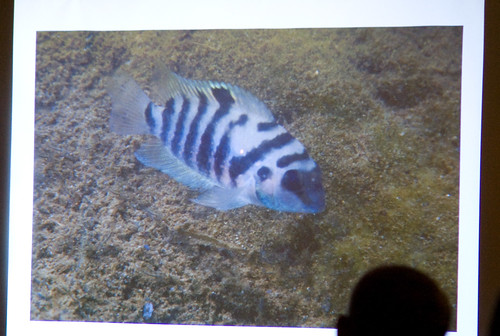
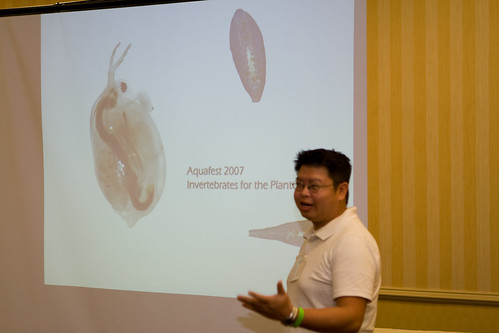
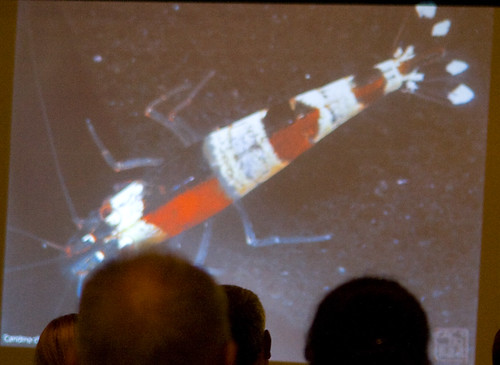
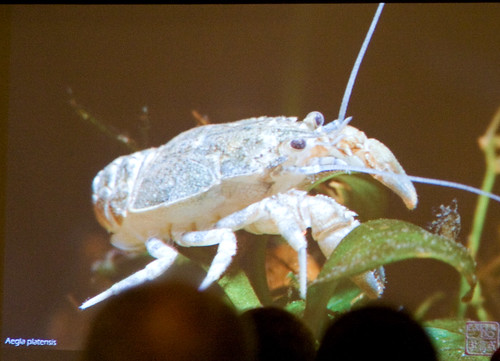




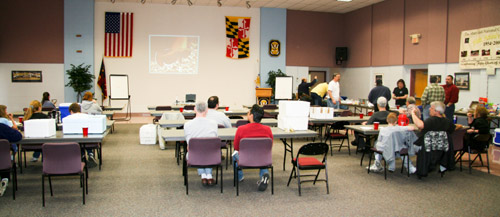



 I attended the
I attended the 
